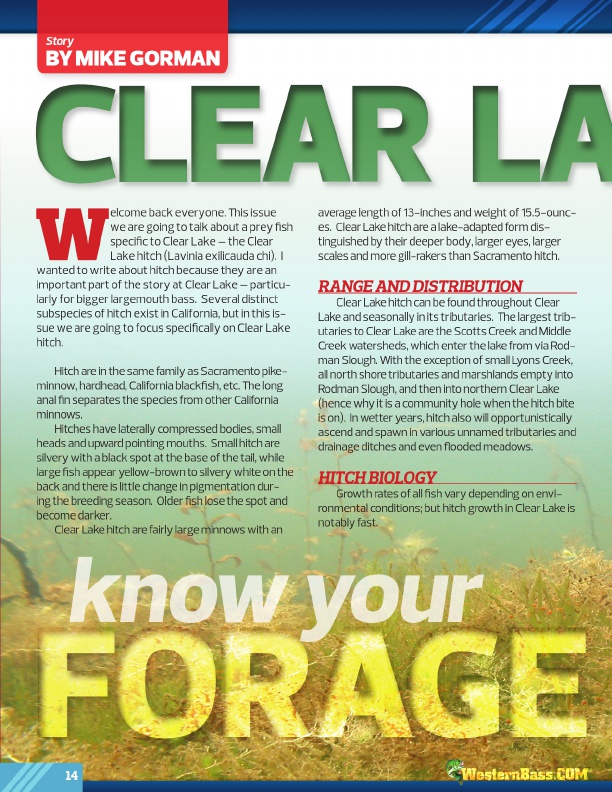
®
C FO LE R A A R G L E A K
know your
Story
BY MIKE GORMAN
W
elcome back everyone. This issue
we are going to talk about a prey fish
specific to Clear Lake – the Clear
Lake hitch (Lavinia exilicauda chi). I wanted to write about hitch because they are an
important part of the story at Clear Lake – particu-
larly for bigger largemouth bass. Several distinct
subspecies of hitch exist in California, but in this is-
sue we are going to focus specifically on Clear Lake
hitch.
Hitch are in the same family as Sacramento pike- minnow, hardhead, California blackfish, etc. The long anal fin separates the species from other California minnows.
Hitches have laterally compressed bodies, small heads and upward pointing mouths. Small hitch are silvery with a black spot at the base of the tail, while large fish appear yellow-brown to silvery white on the back and there is little change in pigmentation dur- ing the breeding season. Older fish lose the spot and become darker.
Clear Lake hitch are fairly large minnows with an
average length of 13-inches and weight of 15.5-ounc- es. Clear Lake hitch are a lake-adapted form dis- tinguished by their deeper body, larger eyes, larger scales and more gill-rakers than Sacramento hitch.
RANGE AND DISTRIBUTION
Clear Lake hitch can be found throughout Clear Lake and seasonally in its tributaries. The largest trib- utaries to Clear Lake are the Scotts Creek and Middle Creek watersheds, which enter the lake from via Rod- man Slough. With the exception of small Lyons Creek, all north shore tributaries and marshlands empty into Rodman Slough, and then into northern Clear Lake (hence why it is a community hole when the hitch bite is on). In wetter years, hitch also will opportunistically ascend and spawn in various unnamed tributaries and drainage ditches and even flooded meadows.
HITCH BIOLOGY
Growth rates of all fish vary depending on envi- ronmental conditions; but hitch growth in Clear Lake is notably fast.
14